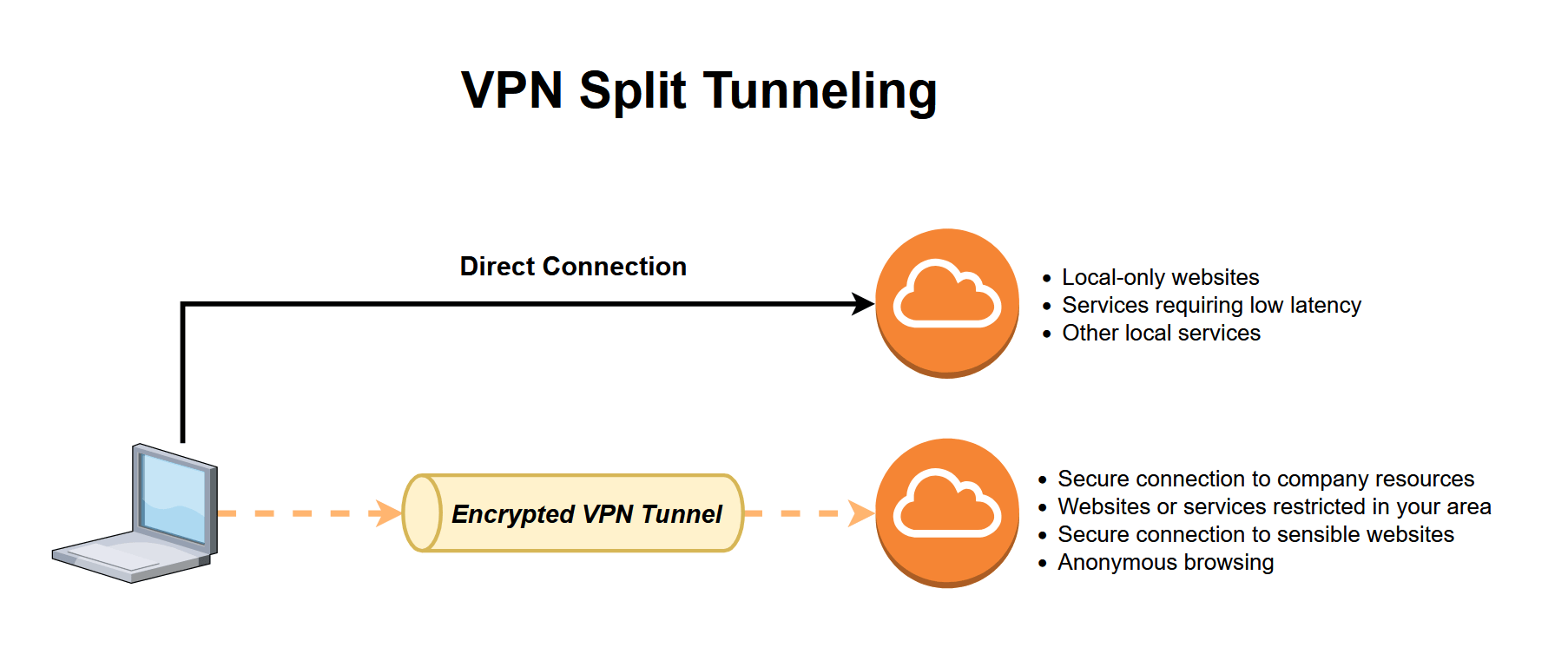
VPN Split Tunneling: Pros and Cons You Should Know
Are you about to subscribe or use a virtual private network (VPN) and want to know more about split tunneling? If that’s the case, this article is for you.
In this blog post, we’ll explore the pros and cons of VPN split tunneling so you can make an informed decision about whether this feature is for you.
Let’s start by talking about what split tunneling is.
VPN split tunneling is a handy feature that enables you to route some of your internet traffic through a secure connection while allowing the rest to access the internet directly.

You may be wondering, what is the point of this feature? The answer is simple.
Suppose you want to use a secure connection to access certain sites or services that require an extra layer of security or anonymity. Without split tunneling, you would have to turn the VPN on and off each time you use such services. This would hurt your latency and overall performance, for example, for streaming video.
Split tunneling solves this by allowing you to use a direct (insecure) connection for certain applications or websites and a secure connection for the rest or vice versa. So, depending on the VPN vendor, you may be able to configure VPN split tunneling based on URL or application (or both). For example, you could configure Firefox to only connect to the Internet using your VPN and Chrome to browse freely (without VPN).
That being said, it’s time for an in-depth review of the pros and cons of this useful feature.
Let’s first review the advantages of split tunneling.
As mentioned above, when you use a VPN, your internet connection can sometimes slow down due to the added layer of encryption and the need to route your traffic through a remote server. With VPN split tunneling, you can choose which applications or websites require the extra security and which ones don’t. This allows you to maintain faster speeds for activities that don’t require a VPN connection, such as streaming videos or downloading large files.
You may face difficulties accessing local resources (like printers or file servers) while connected to a VPN. Split tunneling solves this by allowing you to maintain a connection to both your local network and the VPN, making it easier to access resources from both networks simultaneously.
By routing only specific traffic through your VPN, you can reduce the amount of bandwidth consumed by your VPN connection. This can be particularly helpful when you have limited bandwidth or a metered connection.
Power users, in particular, will appreciate the convenience of not manually turning the VPN on and off each time they require a secure tunnel.
Despite being convenient and helping to improve overall performance, split tunneling also comes with some drawbacks.
One of the primary reasons for using a VPN is to maintain a secure and private connection. You should keep this in mind, especially if you plan to use company resources.
Overall, VPN split tunneling provides many benefits, but there are also potential security risks associated with this feature. Therefore, it’s only recommended for power users who know exactly what they are doing, something that brings us to the next point.
Setting up VPN split tunneling can be a bit more complicated than using a standard VPN connection, as it requires configuring the specific applications or websites you want to route through the VPN. This may not be a significant issue for tech-savvy users, but it can be a challenge for those who are less experienced.
Not all VPN vendors support split tunneling, and some may have limitations on the devices or platforms that can use this feature.
In that sense, before deciding on your VPN provider, you should make sure that the chosen VPN service supports VPN split tunneling and also supports its use on your preferred device.
Overall, VPN split tunneling offers a balance between security and performance, allowing you to choose which traffic requires the added protection of a VPN. Although it has some serious disadvantages, such as increased security risks and somewhat complex configuration, the benefits may outweigh the drawbacks for certain users. Ultimately, deciding to use VPN split tunneling will depend on your specific needs and how comfortable you are with managing the potential risks.
System Force IT provides 24/7 IT support and engineering help with all our services. Our IT infrastructure management team are responsible for the backbone of your business. Monitoring and maintaining both physical and virtual services in real-time.